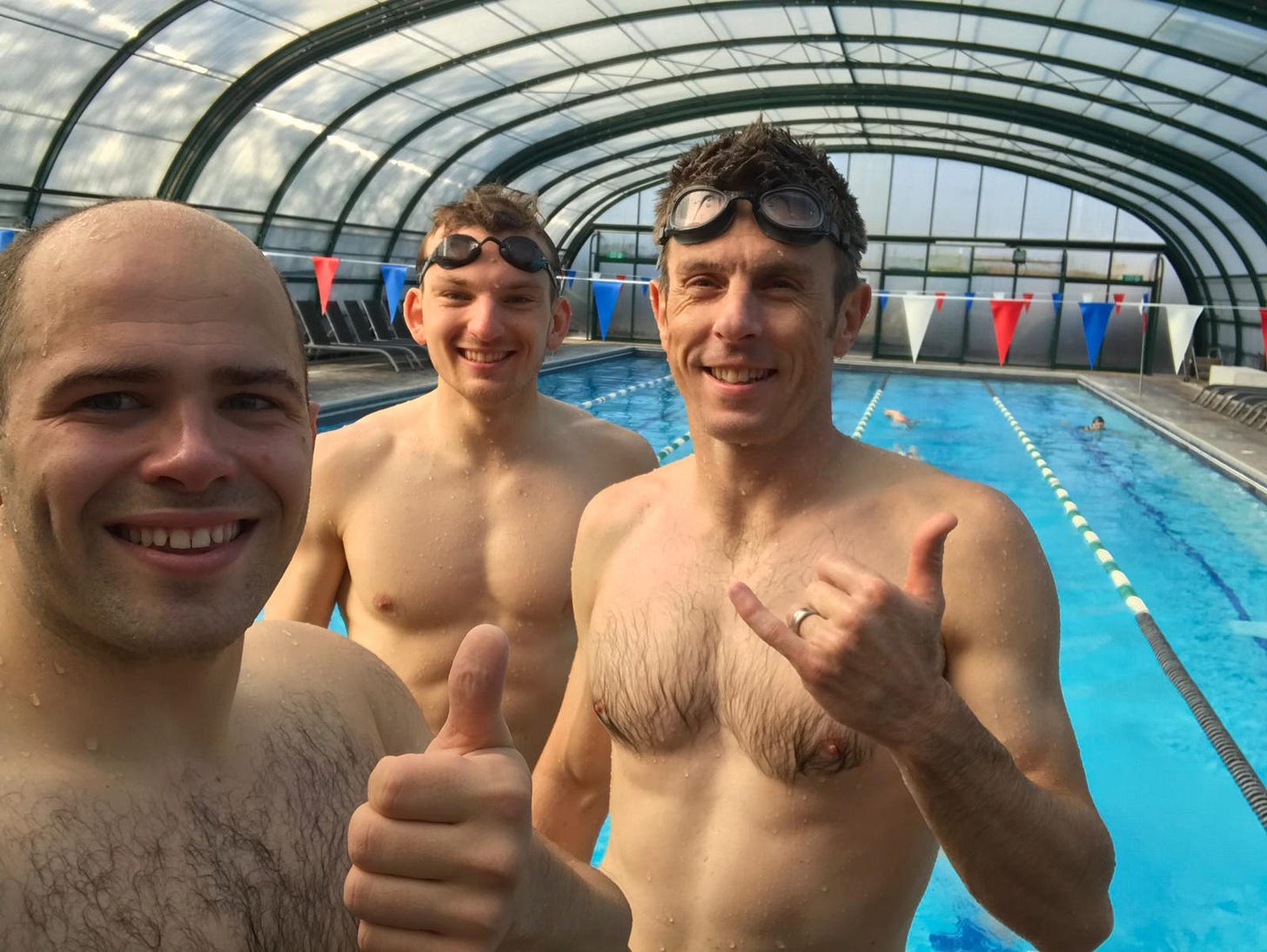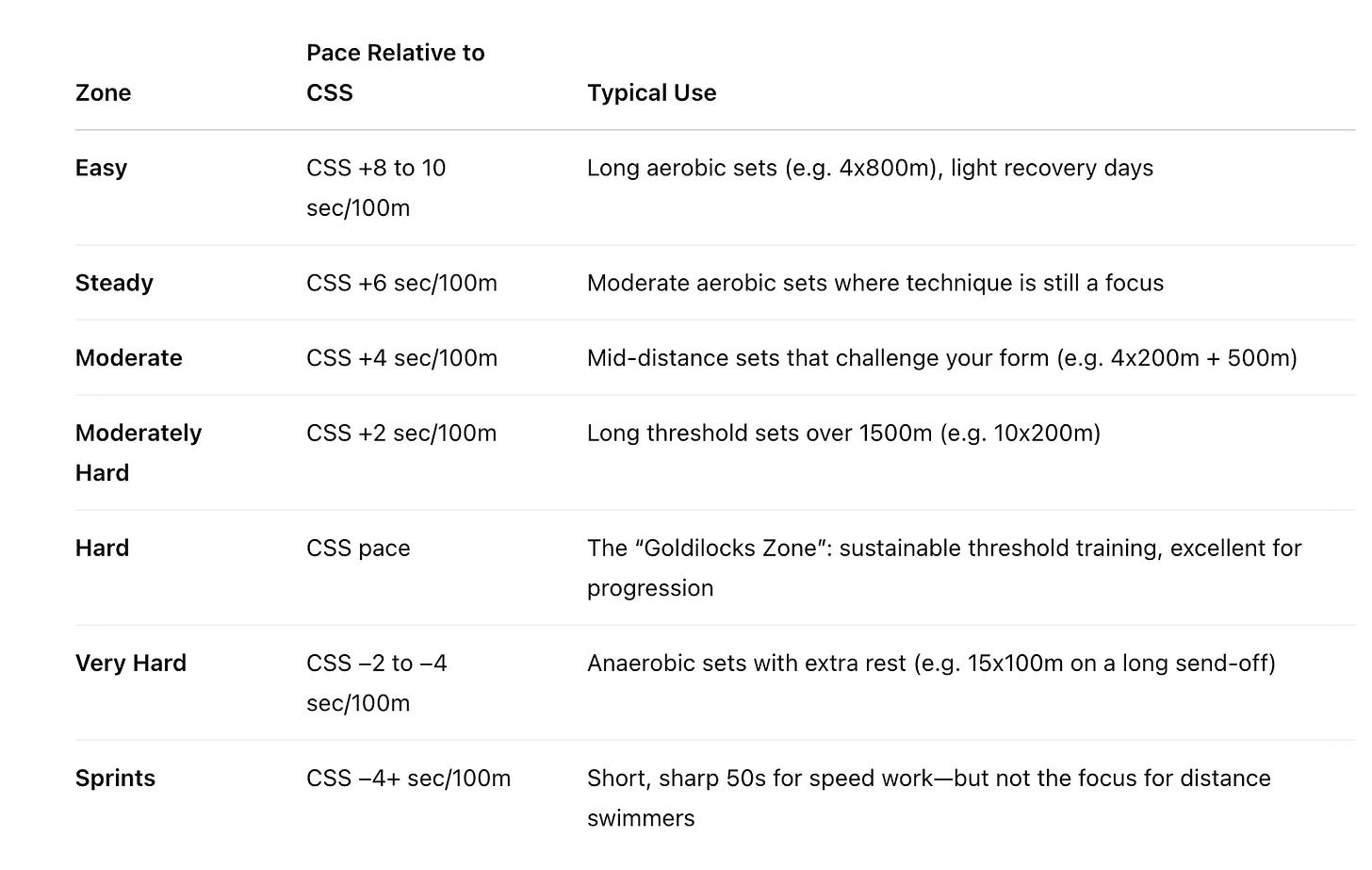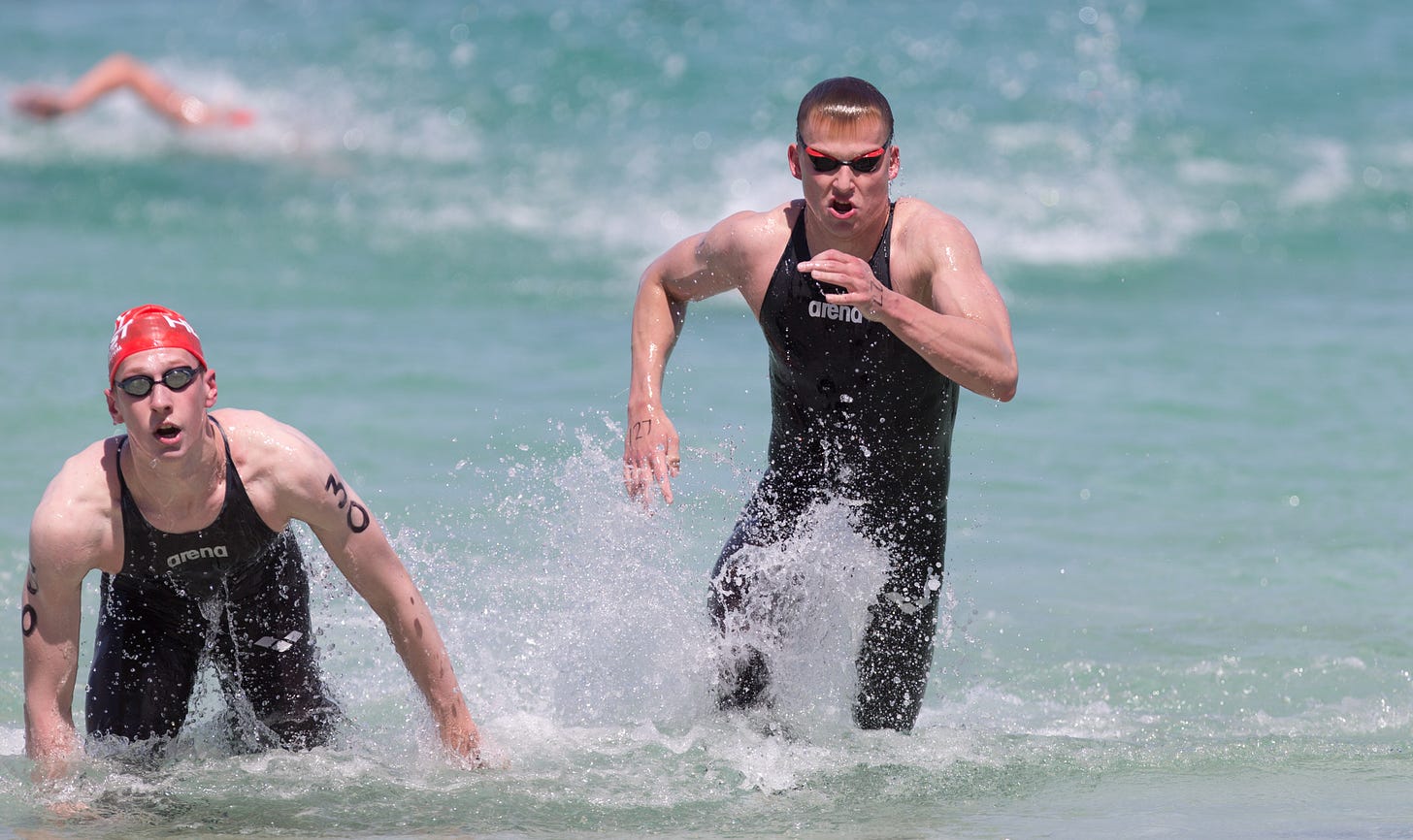📈 Understanding Swim Training Zones for Endurance Swimming
✅ How to Swim Smarter, Not Just Harder
Hey Swimmers,
In the early 1990s, heart rate monitors were the hot new tech in endurance sports. As they became more accessible, athletes and coaches started using heart rate zones to shape training programs and manage intensity. I still remember how game-changing it felt, just before I started my Sport & Exercise Science degree at Bath.
But while heart rate training revolutionised running and cycling, it never quite stuck for swimmers—and for good reason. Chest straps don’t stay put, wrist readings are hard to check mid-stroke, and heart rate itself is wildly individual and influenced by so many external factors (hydration, time of day, fatigue, etc.).
That’s why, at Swim Smooth, we prefer a simpler, more effective approach: training zones based on Critical Swim Speed (CSS).
Why CSS Beats Heart Rate in the Pool
Your CSS is the pace you can sustain over 1500m at max effort. It’s your aerobic threshold—the point just before things go anaerobic. We calculate it using a 400m and 200m time trial, and from there, define your training zones relative to your CSS pace.
Unlike heart rate:
CSS is specific to swimming, not borrowed from running or cycling
It’s objective, easy to measure, and repeatable
You don’t need expensive gear—just a stopwatch and a pace clock
It responds directly to training adaptation
Swim Smooth's Training Zones (Based on CSS)
How to Structure a Week
Let’s say you’re swimming three times a week and training for events between 750m and 5km. Here’s a sample plan:
🟢 Session 1: Aerobic Conditioning
Include Steady efforts (CSS +6s), e.g. 10x400m with 30s rest
🔵 Session 2: Technique & Recovery
Use Easy efforts (CSS +8–10s), focus on drills and relaxed form
🔴 Session 3: Threshold Challenge
Hard zone work at CSS pace, such as the “Goldilocks Set”:
4x100m + 1x200m + 4x100m + 1x300m + 4x100m + 1x400m
How to Progress Your CSS Pace
Your CSS is dynamic—train well and it will improve. Miss a week and it may slide. Here’s a guideline:
✅ Aim to improve by 0.3 to 0.5s per 100m per week
⚠️ Expect a plateau after 8–12 weeks
🚨 Miss a week? Assume +1s/100m CSS slowdown
Testing every 6–8 weeks ensures your pacing remains appropriate, progressive, and motivating.
Final Word: Stay in the Zone
Using training zones anchored to CSS empowers you to train with purpose. You’re no longer guessing or going by vague effort levels—you’re targeting the precise adaptations you need.
Next week, we’ll step out of the pool and into nature with practical ways to structure and progress open water training sessions.
Until then, thanks for reading, your coach, Paul.
Keep reading with a 7-day free trial
Subscribe to Weekly Blog by Swim Smooth to keep reading this post and get 7 days of free access to the full post archives.





